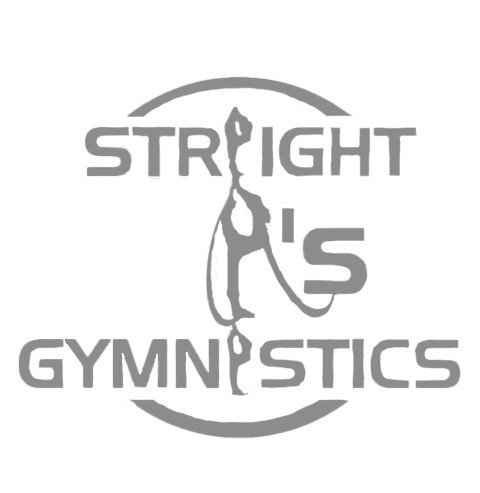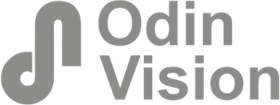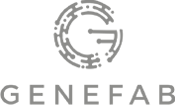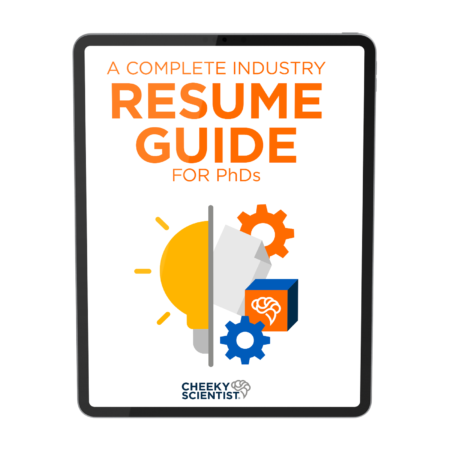A Pitch-Perfect Elevator Script For PhDs In Industry

I had heard of the term “elevator script” before my first industry interview.
Was I sure what it meant? No.
But I got the gist of it: introduce yourself in a compelling way during an interview or networking session. Don’t annoy someone in an elevator.
I dismissed the idea of learning more about it than that
If I remember correctly, I told myself that it was nothing more than a remedial gimmick. One of those unnecessary “life hacks” that clueless people gobble up to calm their nerves before an interview.
Definitely not something a PhD graduate with a background in immunology would need to prop themselves up with.
It wasn’t until my interviewer cut me off, three minutes into my own introduction, that I started to question my interviewing skills.
While I was waiting for a call-back about that job, I kept thinking of the look on the interviewer’s face. Was it…patronizing? Impatient? Bored?
I couldn’t place it, but I know one thing: it started to haunt me as time drug on.
By the time I did get a thanks-but-no-thanks email from the recruiter two weeks later, I had taken it upon myself to look into some job search etiquette.
Apparently, it was acceptable to ask for feedback on your interview. Who knew?
So I replied to my rejection letter, asking if anyone had time to chat with me about what I could do differently if I ever reapplied.
Along with the assurances that I was qualified and other blow-softening affirmations, I also got some useful advice that stung to hear:
You need to work on your elevator pitch.
Whether you’ve been on one interview or 100, I know you’ve heard this before:
So, tell us a little bit about yourself.
Your elevator pitch is designed to answer this question.

Do You Really Need An Elevator Script?
What’s so wrong, you may be asking yourself, with a good old-fashioned conversation?
Can’t two people have an unscripted, productive back-and-forth without resorting to cues and rehearsals?
The answer to that is absolutely – 100%.
And if you find that you have a rapport with a new contact, an interviewer, or a job lead, by all means, carry on with what you’re doing.
An elevator pitch is meant to enhance, not replace, an otherwise normal interaction. Its utility is in giving you a succinct way to present yourself that adds value to the impression you’re making.
It also isn’t something to just shove in someone’s face, along with your handshake and a business card, without being invited to. That would be rude and off-putting.
No, an elevator pitch is not a one-size-fits-all answer to interviews and networking.
But if it’s not that, what is an elevator pitch?
What Is An Elevator Pitch?
An elevator pitch – sometimes called an elevator script or elevator speech – is a short, benefit-focused monologue used to introduce yourself.
The elevator pitch has an interesting origin. Many credit elevator pioneer Elisha Otis for giving the first ever “elevator pitch” in 1853.
The story goes that, while many buildings had elevators, they were considered dangerous. They had a reputation for only being as strong as the weakest rope.
But Otis had invented a better, safer elevator design. He tried to sell his invention with assurances rooted in science and engineering, but these fell on deaf ears.
So he decided, instead, to demonstrate what his new and improved elevator could do.
Otis set up a display of an open elevator shaft at a convention center. With dozens of attendees looking on, he hoisted himself three stories up…and cut his supporting rope with an axe.
The crowd had time to do nothing but gasp as he plummeted to the ground.
But Otis’s invention, a safety mechanism designed to keep an elevator from crashing, came to his rescue.
And so it was that, in less than thirty seconds, Elisha Otis managed to show the world the value of his device rather than trying – and failing – to convince them.
It’s from this legend that the elevator pitch was born. It’s meant to distill a product’s value proposition into a neat package that’s easy to understand and easy to remember.
In 30 seconds or less, an elevator pitch is meant to get a point across.
Earlier I said that an elevator pitch is meant to answer the question, “What do you do?” And that’s true.
On the surface, at least.
But the real question employers are asking that an elevator pitch is meant to answer is, “What’s in it for me?”
When & Where Should You Use Your Elevator Pitch?
In a perfect world, you’d deliver your pitch on an elevator ride up to the office of the hiring manager.
But life is unpredictable, and that’s precisely why you need an elevator pitch: you never know when you’ll bump into your next opportunity.
You’ll use your speech to introduce yourself and what you do. If you’re transitioning into industry, you’ll say what you want to do.
If you’re at a conference, practice telling people who you are and what you care about by tweaking your speech to fit the occasion.
Use your script in the summary of your LinkedIn profile – this will keep your professional brand consistent and clarify who you are to your connections.
At a networking event, job fair, or career expo? That’s a great time to really perfect your elevator pitch. Because you’ll be saturated with opportunities to practice your script, now is the perfect time to try dropping parts, adding on, and really embracing the conversational tone you wrote it for.
And, of course, use your script during job interviews to answer the questions Who are you and How will hiring you benefit this organization?

The 5 Things Every Elevator Script Needs
During those rare moments when you have the undivided attention of decision-makers or new connections, make them count with a well-thought-out elevator pitch.
There are five elements that a great networking script shares.
1. A Time Limit
Just because there’s a lot to say about crafting the perfect elevator script doesn’t mean that you should plan on saying a lot. The elevator pitch is all about quality over quantity.
In fact, your script will probably look very short on paper. A commonly agreed-upon word count would be 200 words or less. The amount of time it takes should be between 10 and 30 seconds.
Why so short? Because attention comes at a premium these days. If you want to hold a person’s interest, you need to thoughtfully share specific information that is relevant to whomever you’re speaking to.
That’s why savvy PhDs like to have two speeches ready – one short and one long. The shorter version is great for quick meet-and-greet events. Longer versions are designed for one-on-one conversations where the person is prepared to get to know you.
There are two prime times to work your elevator pitch into an interview: the introductory handshake or the invitation to “tell us about yourself.” At a networking event or job fair, the handshake is a perfect time for your elevator script.
2. A Memorable Introduction
Begin with your name and a title. Your title can be an area of study, degree, internship, or postdoc experience you may want to lead with, research positions, current or past projects, or military service.
This name and title are what you want to be remembered. “Hi, my name is X and I work in YZ.”
It sounds simple, but choose this title with intention.
3. A Mission
The goal of your elevator speech is to spark interest and make you memorable. It’s easy enough to say, but how do you start?
The best way to know what to include in this section is to understand your audience. Ask yourself:
- Who will I be talking to? (A hiring manager? A PhD in an adjacent industry at a conference?)
- What are their pain points and what results are they looking for? (A candidate who can achieve XYZ results? A connection in a field that you majored in?)
- Do you have a solution, and what is it?
These might feel like difficult questions, but you can turn to your targeted resume to put you in the right frame of mind. You have transferable skills that translate to industry scenarios.
Once you have the answers to these questions in mind, develop your experience and mission.
“I’m an immunologist with six years of experience doing XYZ for the University of Denver.”
Your XYZ, in the example above, should tie into what the person you’re speaking to cares about.
If you’re talking to a hiring manager who needs a data scientist, you’ve spent six years analyzing large data sets at the University of Denver.
Or, if you’re talking to someone that needs a medical liaison, you’ve spent the last six years building profitable relationships between universities and the community your research serves.
Tailor your experience to the job you’re targeting.
4. A Hook
What comes next is your spot to prove it.
What have you done with all this raw talent that now stands before them? What you say here is what should make you memorable.
Quantitative results are impactful. They help others put your accomplishments into context and solidify ideas that can feel abstract.
You can pull the data you use in your elevator pitch straight from your resume bullet points. Just as with your experience, the results you choose should be tailored to your audience.
Pull inspiration from job descriptions if you’re stumped as to where to start. What metrics do professionals in your target industry use to measure success?
Include those elements of your experience that closely echo those units of measurement.
Including results in casual, conversational language is key. An elevator pitch packed with technical jargon or even industry-specific terms might alienate – or sound too generic to – the person you’re speaking with.
5. … And Some Trivia
A fun fact helps humanize you. Are you an accomplished fisherman? Do you have a cause that you care about? A seven-handicap? Mother of eight? Make yourself memorable with a personal fact.
Don’t feel as if you need to choose a fact that casts you in a particular light, either. You may spend time volunteering, for instance, but if your passion is fossil hunting, share that instead.
Your goal is to be genuine, and the odds are high that your individual interests are going to stand out more prominently in a new connection’s mind.
The last thing you need to do is to put it all together.
“I’m an immunologist and project manager with seven years of experience in biopharma research. I’ve secured over 1 billion dollars in funding and two patents for medical devices in that time. I’m looking forward to continuing to use my scientific knowledge to create products that help people. And I’m also a decorated fisherman. You’re looking at the five-time Colorado Trout Derby champion.”
You can use online tools to help you determine how long your pitch takes to read.

It’s Not Just What You Say – It’s How You Say It
Another reason to practice your elevator pitch is to get a feel for how you can say it better.
Body language is an important part of communication. It’s easy to be satisfied that we said what we needed to say, but it’s important to keep a few things in mind.
You want to convey that you are focused on and connected with the person you’re speaking to, and you want to keep your demeanor conversational and confident.
1. Don’t speak too fast.
Speak in an even tone and at a regular pace. You might have a lot to say and a limited amount of time to say it, but rushing through will not leave a better impression than giving a confident, well-rehearsed introduction.
2. Avoid rambling.
Rambling is one of the most important hazards we’re trying to avoid by creating an elevator script. This can be a challenge if the person you’re speaking with interjects, however. If this happens, that’s okay. Look for a window to course-correct. If none arises, don’t let this shake your focus. Instead, play to the interjection. This is still an opportunity to make yourself memorable, and you can always share a version of your elevator script in a thank-you email after the fact.
3. Don’t frown or speak in a monotone way.
If you’ve heard of body mirroring then you know the importance of projecting the energy you want to get back. If you’re frowning or speaking in a flat tone, that kind of attitude is contagious. Convey enthusiasm with your facial expressions and the pitch of your voice.
4. Check how you look.
Take a quick glance in the mirror now and then if you’re meeting with others in person. You want your appearance to be neat, your clothes clean and your features manicured. If you’re speaking with someone virtually, lighting is another element of your appearance that’s up to you. Make sure the area you’re seated in is brightly lit and that the background is not distracting.
5. Make eye contact.
Online or in-person, eye contact is important. It signals interest, focus and is a sign of respect. Make sustained eye contact for four to five seconds at a time before taking a break. Aim to make eye contact 50% of the time, and use hand gestures or expressions as an excuse to look away briefly so you’re not staring.
Concluding Remarks
There are rare moments when you have the undivided attention of decision-makers at your target company. Make them count with a well-thought-out elevator pitch. An elevator pitch should last, ideally, somewhere around 10 seconds. If it goes over, it should never be longer than 30 seconds. Introduce yourself, and explain what you’re good at and what you want to do. Include a fact that makes you unforgettable, and also one that makes you human. Be mindful of your body language and tone. If you let them, nervous speech and facial expressions could sabotage all the thought you put into your introduction. Avoid technical jargon that would alienate an industry professional and focus instead on the transferable skills you bring to the table.

ABOUT ISAIAH HANKEL, PHD
CEO, CHEEKY SCIENTIST & SUCCESS MENTOR TO PHDS
Dr. Isaiah Hankel is the Founder and CEO of Cheeky Scientist. His articles, podcasts and trainings are consumed annually by millions of PhDs and other professionals in hundreds of different countries. He has helped PhDs transition into top companies like Amazon, Google, Apple, Intel, Dow Chemical, BASF, Merck, Genentech, Home Depot, Nestle, Hilton, SpaceX, Tesla, Syngenta, the CDC, UN and Ford Foundation.
Dr. Hankel has published 3X bestselling books and his latest book, The Power of a PhD, debuted on the Barnes & Noble bestseller list. His methods for getting PhDs hired have been featured in the Harvard Business Review, Nature, Forbes, The Guardian, Fast Company, Entrepreneur Magazine and Success Magazine.
More Written by Isaiah Hankel, PhD




























































